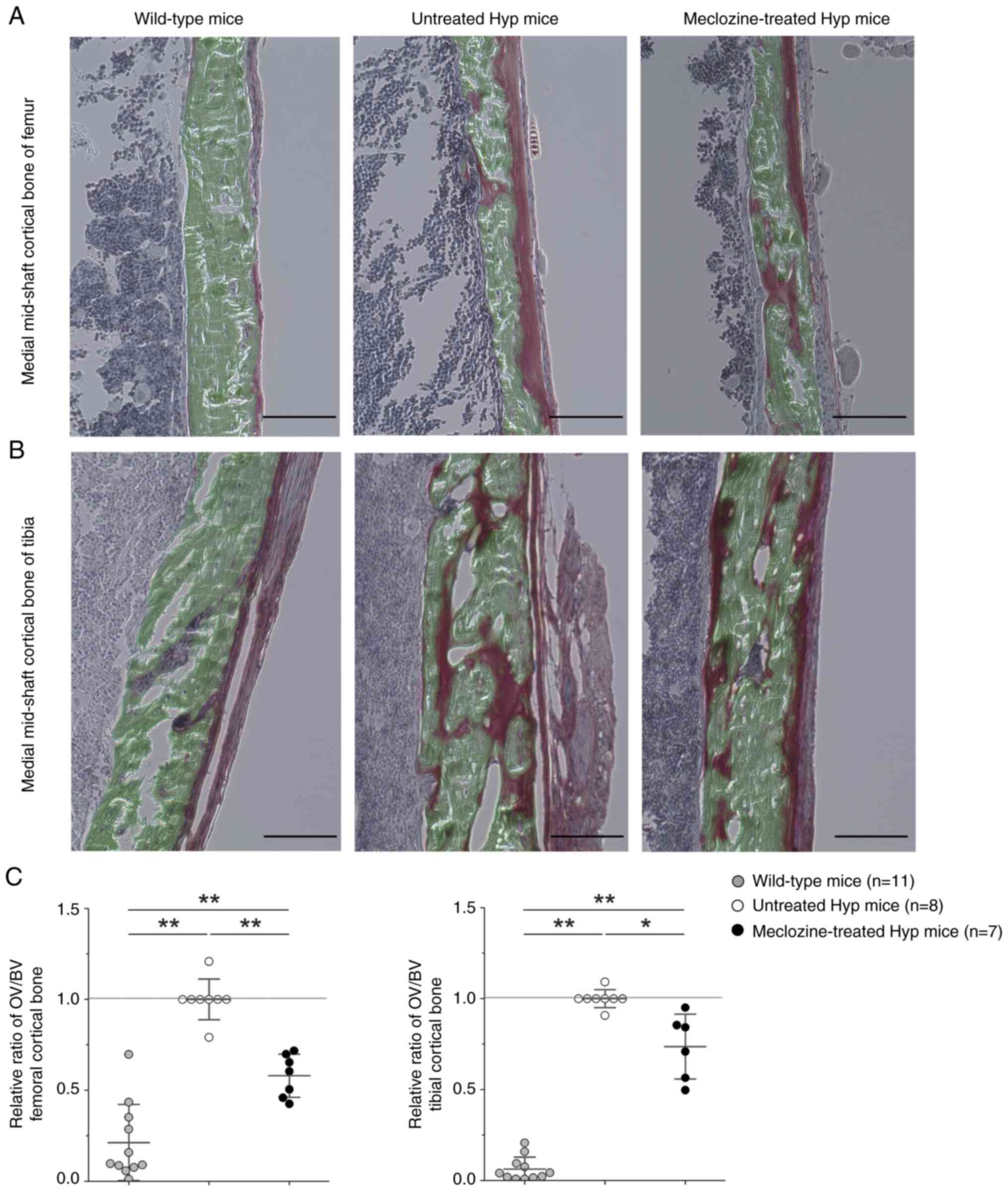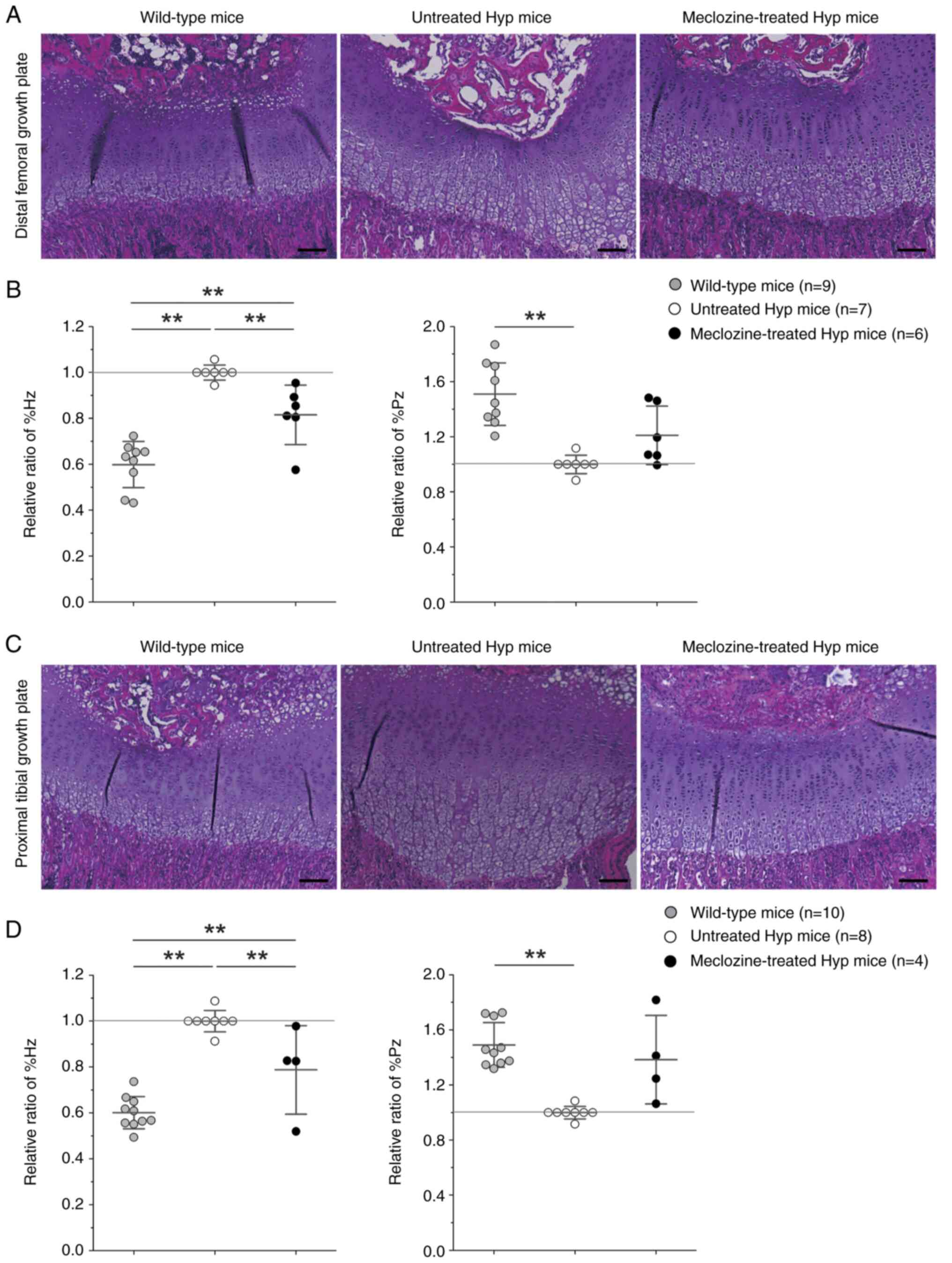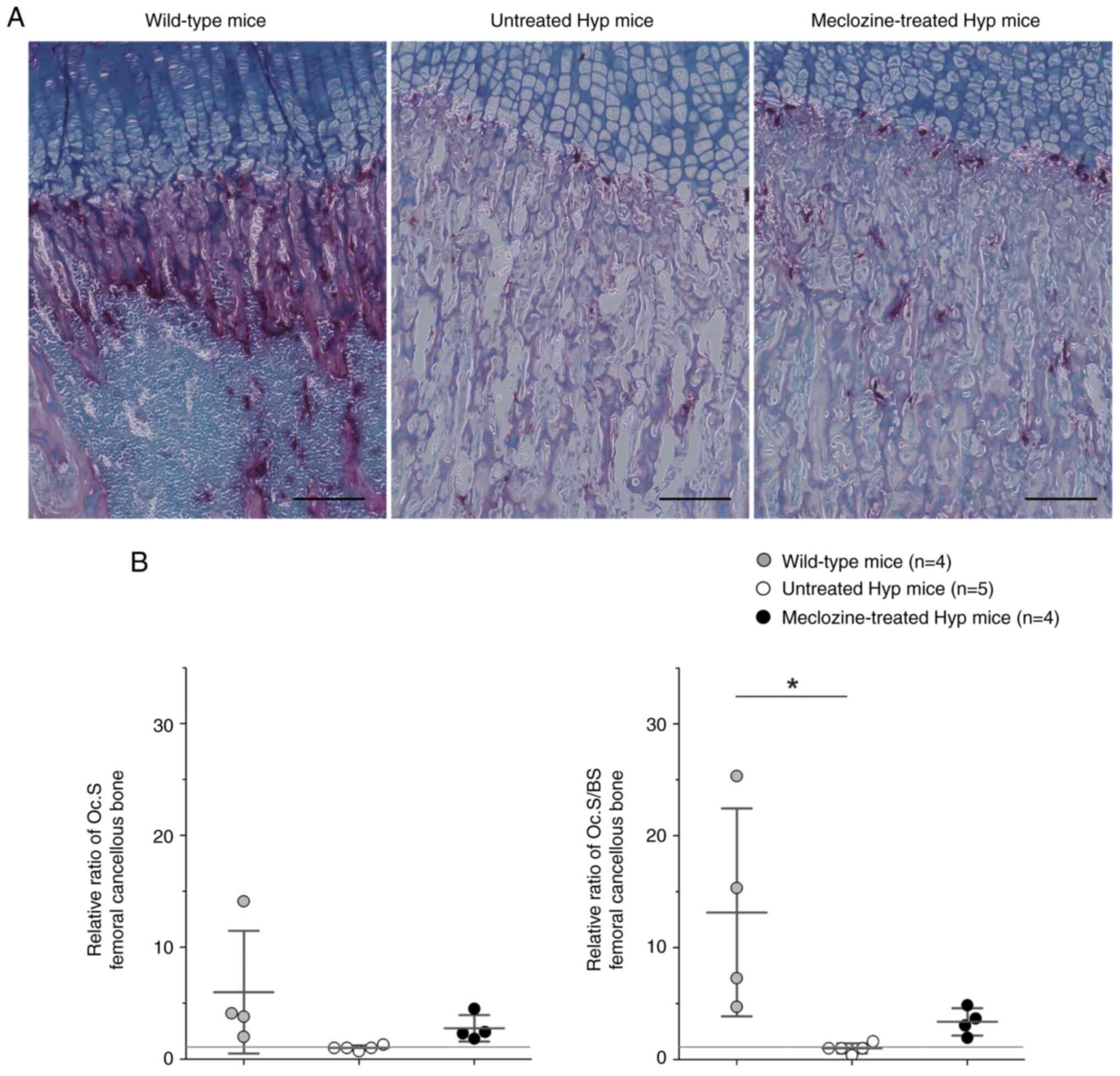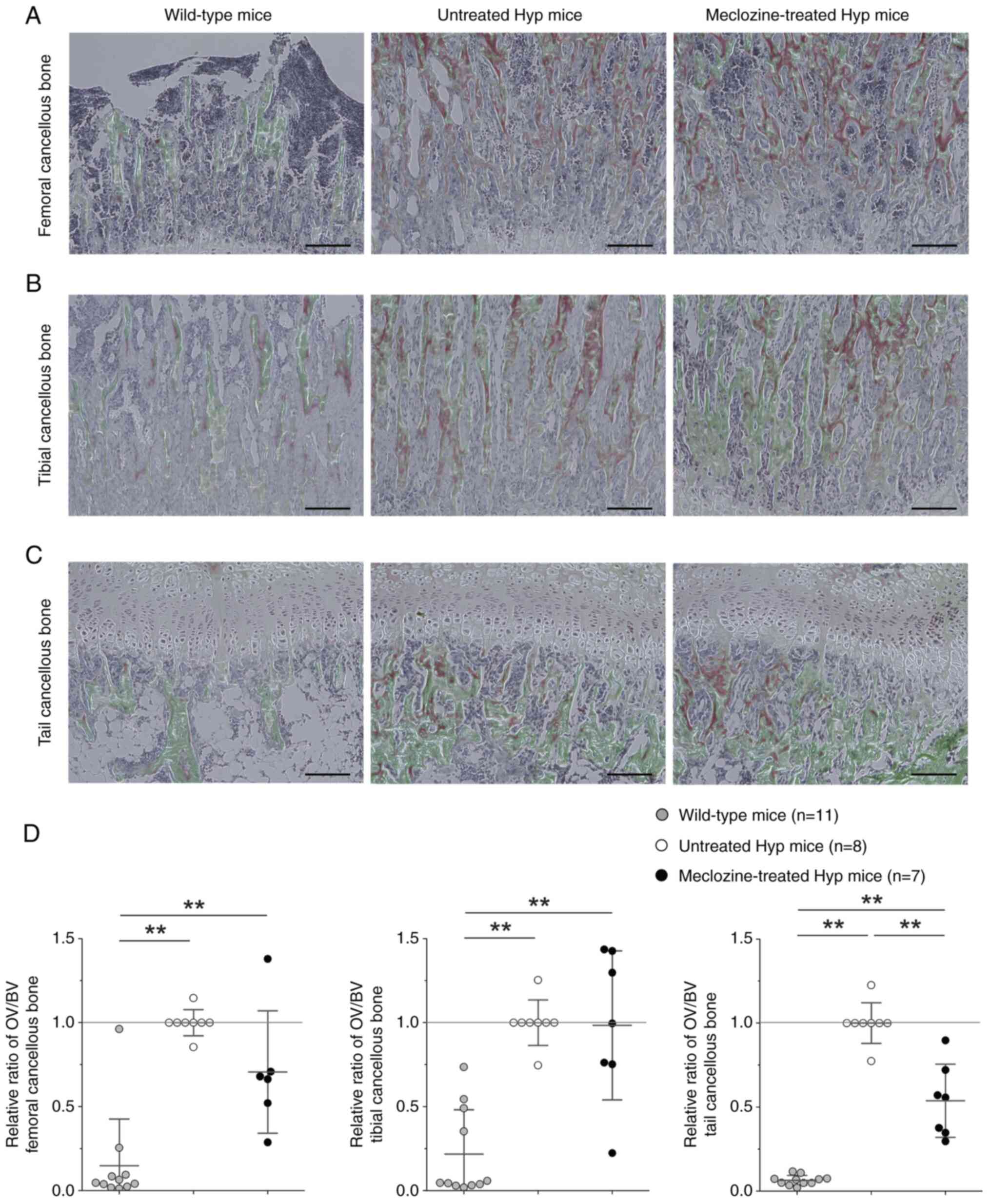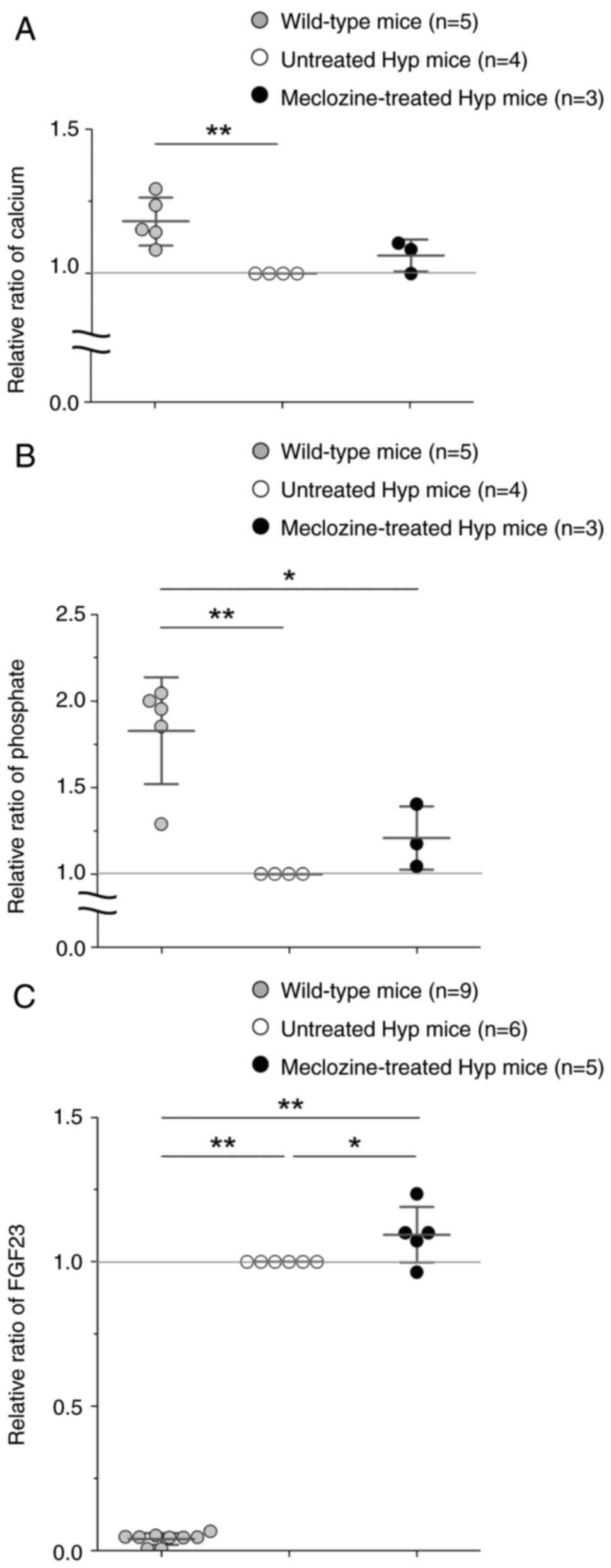|
1
|
Skrinar A, Dvorak-Ewell M, Evins A, Macica
C, Linglart A, Imel EA, Theodore-Oklota C and San Martin J: The
lifelong impact of X-Linked hypophosphatemia: Results from a burden
of disease survey. J Endocr Soc. 3:1321–1334. 2019.PubMed/NCBI View Article : Google Scholar
|
|
2
|
Alizadeh Naderi AS and Reilly RF:
Hereditary disorders of renal phosphate wasting. Nat Rev Nephrol.
6:657–665. 2010.PubMed/NCBI View Article : Google Scholar
|
|
3
|
Carpenter TO, Shaw NJ, Portale AA, Ward
LM, Abrams SA and Pettifor JM: Rickets. Nat Rev Dis Primers.
3(17101)2017.PubMed/NCBI View Article : Google Scholar
|
|
4
|
Michigami T and Ozono K: Roles of
phosphate in skeleton. Front Endocrinol (Lausanne).
10(180)2019.PubMed/NCBI View Article : Google Scholar
|
|
5
|
Michigami T: Skeletal mineralization:
Mechanisms and diseases. Ann Pediatr Endocrinol Metab. 24:213–219.
2019.PubMed/NCBI View Article : Google Scholar
|
|
6
|
Andrukhova O, Zeitz U, Goetz R, Mohammadi
M, Lanske B and Erben RG: FGF23 acts directly on renal proximal
tubules to induce phosphaturia through activation of the
ERK1/2-SGK1 signaling pathway. Bone. 51:621–628. 2012.PubMed/NCBI View Article : Google Scholar
|
|
7
|
Shimada T, Hasegawa H, Yamazaki Y, Muto T,
Hino R, Takeuchi Y, Fujita T, Nakahara K, Fukumoto S and Yamashita
T: FGF-23 is a potent regulator of vitamin D metabolism and
phosphate homeostasis. J Bone Miner Res. 19:429–435.
2004.PubMed/NCBI View Article : Google Scholar
|
|
8
|
Chen G, Liu Y, Goetz R, Fu L, Jayaraman S,
Hu MC, Moe OW, Liang G, Li X and Mohammadi M: α-Klotho is a
non-enzymatic molecular scaffold for FGF23 hormone signalling.
Nature. 553:461–466. 2018.PubMed/NCBI View Article : Google Scholar
|
|
9
|
Murali SK, Andrukhova O, Clinkenbeard EL,
White KE and Erben RG: Excessive osteocytic Fgf23 secretion
contributes to pyrophosphate accumulation and mineralization defect
in hyp mice. PLoS Biol. 14(e1002427)2016.PubMed/NCBI View Article : Google Scholar
|
|
10
|
Murali SK, Roschger P, Zeitz U, Klaushofer
K, Andrukhova O and Erben RG: FGF23 regulates bone mineralization
in a 1,25(OH)2 D3 and klotho-independent manner. J Bone Miner Res.
31:129–142. 2016.PubMed/NCBI View Article : Google Scholar
|
|
11
|
Kawai M, Kinoshita S, Kimoto A, Hasegawa
Y, Miyagawa K, Yamazaki M, Ohata Y, Ozono K and Michigami T: FGF23
suppresses chondrocyte proliferation in the presence of soluble
α-Klotho both in vitro and in vivo. J Biol Chem. 288:2414–2427.
2013.PubMed/NCBI View Article : Google Scholar
|
|
12
|
Matsushita M, Kitoh H, Ohkawara B, Mishima
K, Kaneko H, Ito M, Masuda A, Ishiguro N and Ohno K: Meclozine
facilitates proliferation and differentiation of chondrocytes by
attenuating abnormally activated FGFR3 signaling in achondroplasia.
PLoS One. 8(e81569)2013.PubMed/NCBI View Article : Google Scholar
|
|
13
|
Matsushita M, Esaki R, Mishima K, Ishiguro
N, Ohno K and Kitoh H: Clinical dosage of meclozine promotes
longitudinal bone growth, bone volume, and trabecular bone quality
in transgenic mice with achondroplasia. Sci Rep.
7(7371)2017.PubMed/NCBI View Article : Google Scholar
|
|
14
|
Komla-Ebri D, Dambroise E, Kramer I,
Benoist-Lasselin C, Kaci N, Le Gall C, Martin L, Busca P, Barbault
F, Graus-Porta D, et al: Tyrosine kinase inhibitor NVP-BGJ398
functionally improves FGFR3-related dwarfism in mouse model. J Clin
Invest. 126:1871–1884. 2016.PubMed/NCBI View
Article : Google Scholar
|
|
15
|
Wohrle S, Henninger C, Bonny O, Thuery A,
Beluch N, Hynes NE, Guagnano V, Sellers WR, Hofmann F, Kneissel M,
et al: Pharmacological inhibition of fibroblast growth factor (FGF)
receptor signaling ameliorates FGF23-mediated hypophosphatemic
rickets. J Bone Miner Res. 28:899–911. 2013.PubMed/NCBI View Article : Google Scholar
|
|
16
|
Miyagawa K, Yamazaki M, Kawai M, Nishino
J, Koshimizu T, Ohata Y, Tachikawa K, Mikuni-Takagaki Y, Kogo M,
Ozono K and Michigami T: Dysregulated gene expression in the
primary osteoblasts and osteocytes isolated from hypophosphatemic
Hyp mice. PLoS One. 9(e93840)2014.PubMed/NCBI View Article : Google Scholar
|
|
17
|
Akagi H, Ochi H, Soeta S, Kanno N,
Yoshihara M, Okazaki K, Yogo T, Harada Y, Amasaki H and Hara Y: A
comparison of the process of remodeling of
hydroxyapatite/Poly-D/L-Lactide and beta-tricalcium phosphate in a
loading site. Biomed Res Int. 2015(730105)2015.PubMed/NCBI View Article : Google Scholar
|
|
18
|
Mishima K, Kitoh H, Ohkawara B, Okuno T,
Ito M, Masuda A, Ishiguro N and Ohno K: Lansoprazole upregulates
polyubiquitination of the TNF receptor-associated factor 6 and
facilitates Runx2-mediated osteoblastogenesis. EBioMedicine.
2:2046–2061. 2015.PubMed/NCBI View Article : Google Scholar
|
|
19
|
Dempster DW, Compston JE, Drezner MK,
Glorieux FH, Kanis JA, Malluche H, Meunier PJ, Ott SM, Recker RR
and Parfitt AM: Standardized nomenclature, symbols, and units for
bone histomorphometry: A 2012 update of the report of the ASBMR
Histomorphometry Nomenclature Committee. J Bone Miner Res. 28:2–17.
2013.PubMed/NCBI View Article : Google Scholar
|
|
20
|
Fuente R, Gil-Pena H, Claramunt-Taberner
D, Hernández-Frías O, Fernández-Iglesias Á, Hermida-Prado F,
Anes-González G, Rubio-Aliaga I, Lopez JM and Santos F: Marked
alterations in the structure, dynamics and maturation of growth
plate likely explain growth retardation and bone deformities of
young Hyp mice. Bone. 116:187–195. 2018.PubMed/NCBI View Article : Google Scholar
|
|
21
|
Anagnostou E, Dimopoulou P, Sklavos S,
Zouvelou V and Zambelis T: Identifying jitter outliers in single
fiber electromyography: Comparison of four methods. Muscle Nerve.
63:217–224. 2021.PubMed/NCBI View Article : Google Scholar
|
|
22
|
Imel EA: Burosumab for pediatric X-linked
hypophosphatemia. Curr Osteoporos Rep. 19:271–277. 2021.PubMed/NCBI View Article : Google Scholar
|
|
23
|
Matsushita M, Hasegawa S, Kitoh H, Mori K,
Ohkawara B, Yasoda A, Masuda A, Ishiguro N and Ohno K: Meclozine
promotes longitudinal skeletal growth in transgenic mice with
achondroplasia carrying a gain-of-function mutation in the FGFR3
gene. Endocrinology. 156:548–554. 2015.PubMed/NCBI View Article : Google Scholar
|
|
24
|
Kitoh H, Matsushita M, Mishima K, Nagata
T, Kamiya Y, Ueda K, Kuwatsuka Y, Morikawa H, Nakai Y and Ishiguro
N: Pharmacokinetics and safety after once and twice a day doses of
meclizine hydrochloride administered to children with
achondroplasia. PLoS One. 15(e0229639)2020.PubMed/NCBI View Article : Google Scholar
|
|
25
|
Fuente R, Gil-Pena H, Claramunt-Taberner
D, Hernández-Frías O, Fernández-Iglesias Á, Alonso-Durán L,
Rodríguez-Rubio E, Hermida-Prado F, Anes-González G, Rubio-Aliaga
I, et al: MAPK inhibition and growth hormone: A promising therapy
in XLH. FASEB J. 33:8349–8362. 2019.PubMed/NCBI View Article : Google Scholar
|
|
26
|
Hayashibara T, Hiraga T, Sugita A, Wang L,
Hata K, Ooshima T and Yoneda T: Regulation of osteoclast
differentiation and function by phosphate: Potential role of
osteoclasts in the skeletal abnormalities in hypophosphatemic
conditions. J Bone Miner Res. 22:1743–1751. 2007.PubMed/NCBI View Article : Google Scholar
|
|
27
|
Zhang MY, Ranch D, Pereira RC, Armbrecht
HJ, Portale AA and Perwad F: Chronic inhibition of ERK1/2 signaling
improves disordered bone and mineral metabolism in hypophosphatemic
(Hyp) mice. Endocrinology. 153:1806–1816. 2012.PubMed/NCBI View Article : Google Scholar
|
|
28
|
Wang Z, Lee B, Pearce D, Qian S, Wang Y,
Zhang Q and Chow MS: Meclizine metabolism and pharmacokinetics:
Formulation on its absorption. J Clin Pharmacol. 52:1343–1349.
2012.PubMed/NCBI View Article : Google Scholar
|
|
29
|
Guo J, Li W, Wu Y, Jing X, Huang J, Zhang
J, Xiang W, Ren R, Lv Z, Xiao J and Guo F: Meclizine prevents
ovariectomy-induced bone loss and inhibits osteoclastogenesis
partially by upregulating PXR. Front Pharmacol.
8(693)2017.PubMed/NCBI View Article : Google Scholar
|
|
30
|
Takemoto G, Matsushita M, Okamoto T, Ito
T, Matsuura Y, Takashima C, Chen-Yoshikawa TF, Ebi H, Imagama S,
Kitoh H, et al: Meclozine attenuates the MARK pathway in mammalian
chondrocytes and ameliorates FGF2-Induced bone hyperossification in
larval zebrafish. Front Cell Dev Biol. 9(694018)2022.PubMed/NCBI View Article : Google Scholar
|















